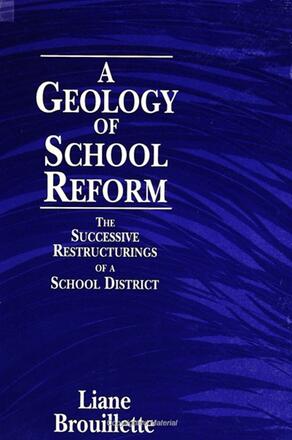
A Geology of School Reform
The Successive Restructurings of a School District
Alternative formats available from:
Provides a rare look at how successive waves of educational reforms have interacted within a single school district.
Description
A Geology of School Reform provides a rare look at how successive waves of reform have interacted within a single school district. Among the questions raised are: Which practices proved destructive to the learning of students and the morale of teachers? What innovations have practitioners kept despite changes in educational fashion?
The Cottonwood School District, which began as two rural schoolhouses in the early 1950s, is followed through the experiments of the 1960s; the back-to-basics movements of the 1970s; and the innovations of the 1980s. The successive waves of reform had different meanings for various professional and community groups within this culturally diverse district. Educators, enmeshed in the priorities of previous reforms, often resisted subsequent changes. Although the differences that arose between them and their communities sometimes required facilitators to assist communication, collaborative decision making has helped Cottonwood to deal with these changes.
Liane Brouillette is Assistant Professor of Educational Leadership and Cultural Studies at the University of Houston.
Reviews
"As more and more states and school districts race to restructure, less and less thought is being given to what might best fit in specific contexts. This book has so much in it that conveys the deepness of the contexts of schools and the inappropriateness of fast solutions." -- H. Dickson Corbett, Independent Educational Researcher
"By using a multi-level perspective, this book avoids a common current problem--treating school reform in a vacuum. It provides an empirical investigation of how school reform is affected by the nested quality of schools in districts and societal contexts.
"The finding that site-based decision making was valuable in this district context does not remove the fact that schools, classrooms, and the larger district are vulnerable to larger societal pressures. While this does not seem--on the surface--to be particularly profound, it is an important insight in an age when schools are treated as isolated entities." -- Gary M. Crow, Louisiana State University